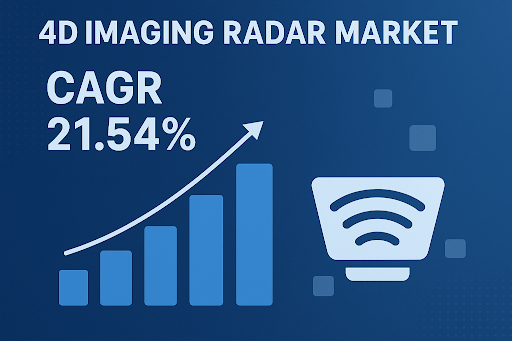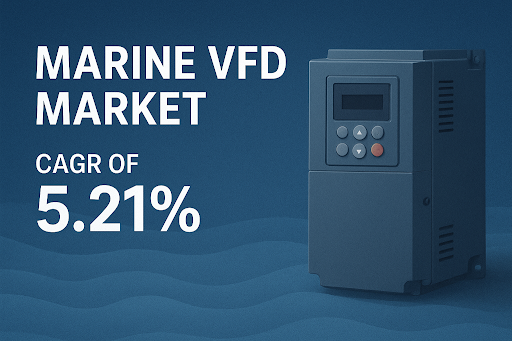The 4D Imaging Radar Market is transforming the way vehicles, drones, and smart devices perceive their surroundings. Unlike traditional radar systems that only measure distance and speed, 4D imaging radar captures high-resolution spatial data in real-time—adding depth, height, and movement tracking capabilities. This makes it indispensable in applications like autonomous driving, defense surveillance, and industrial robotics. As industries increasingly shift toward automation, safety, and real-time environmental awareness, the demand for 4D imaging radar technology continues to rise rapidly worldwide.
4D Imaging Radar Market Size and Growth Forecast
According to SNS Insider insights, the global 4D Imaging Radar Market was valued at around USD 2.38 billion in 2024 and is projected to soar to USD 11.30 billion by 2032, expanding at a remarkable CAGR of 21.54% between 2025 and 2032. This exponential growth reflects the rising adoption of radar-based sensors across multiple sectors—especially automotive and aerospace. The expansion is further driven by the increasing penetration of electric and autonomous vehicles, where radar systems play a key role in collision detection, adaptive cruise control, and advanced driver assistance systems (ADAS).
Key Drivers Boosting the 4D Imaging Radar Market
Several factors are propelling the rapid evolution of the 4D imaging radar market. One of the main drivers is the integration of radar technology in autonomous vehicles. Leading automakers are investing heavily in radar-based ADAS features to ensure safety and precision in navigation. In addition, the defense and aerospace sectors are increasingly relying on 4D radar for border surveillance, unmanned aerial systems (UAS), and threat detection.
Furthermore, urban mobility solutions and smart city projects are amplifying demand for advanced sensing technologies. The shift toward Industry 4.0 automation has also boosted radar deployment in robotics and industrial monitoring, enhancing operational efficiency and situational awareness. Together, these developments are establishing radar as a critical sensing backbone for next-generation mobility and safety solutions.
Technological Advancements in the 4D Imaging Radar Market
The future of the 4D imaging radar market is being shaped by significant technological breakthroughs. Modern radar systems are becoming smaller, more energy-efficient, and more affordable, allowing for mass-market applications. Companies are developing CMOS-based radar chips capable of delivering ultra-high-resolution imaging while maintaining low power consumption.
Another emerging trend is the fusion of AI and machine learning algorithms with radar imaging. These technologies allow radar systems to interpret environmental data more intelligently—distinguishing between static and moving objects, classifying objects, and predicting trajectories. Such AI-driven radar systems are expected to redefine autonomous driving, robot navigation, and security monitoring, ensuring accuracy even in poor weather or low-visibility conditions where cameras or LiDAR may fail.
Regional Insights: 4D Imaging Radar Market Trends Across the Globe
The 4D imaging radar market is witnessing dynamic growth across key regions. North America currently leads the market due to early adoption of autonomous technologies and strong R&D investments from major automotive and semiconductor companies. The United States plays a pivotal role, with top players developing radar modules for self-driving cars, defense applications, and industrial safety systems.
Europe follows closely, with countries like Germany and the UK spearheading radar integration in automotive manufacturing. The region’s strict safety regulations and growing EV adoption are further fueling the need for advanced radar sensors. Meanwhile, Asia-Pacific is emerging as the fastest-growing region, driven by rapid industrialization, expanding vehicle production, and government support for smart mobility initiatives. Nations like China, Japan, and South Korea are heavily investing in radar technology to strengthen their position in both automotive and robotics innovation.
Future Opportunities in the 4D Imaging Radar Market
The upcoming decade presents vast opportunities for the 4D imaging radar market. The surge in electric and autonomous vehicle manufacturing will remain the dominant growth engine, as automakers prioritize 360-degree perception systems for safer and smoother rides. Additionally, infrastructure and logistics sectors are exploring radar-based sensing for traffic monitoring, drone delivery, and smart surveillance.
Beyond mobility, the technology is expanding into healthcare monitoring, agriculture, and industrial safety—where its precision and non-invasive capabilities provide valuable insights. As radar sensors continue to evolve with improved resolution and data analytics, their role in enabling real-time decision-making will further accelerate market growth.
Challenges in the 4D Imaging Radar Market
Despite strong growth potential, the 4D imaging radar market faces certain challenges. High manufacturing costs and complex signal processing requirements are major hurdles for smaller manufacturers. Additionally, ensuring accurate data interpretation in cluttered environments remains a technical challenge.
Competition from other sensing technologies, particularly LiDAR and optical cameras, also poses a restraint. However, radar’s unique ability to function reliably in adverse weather conditions gives it a competitive advantage. Continued research and miniaturization of radar chips are expected to reduce costs and drive broader adoption in the coming years.
Conclusion
The 4D imaging radar market stands at the forefront of next-generation sensing technology. As industries push for automation, safety, and real-time intelligence, the adoption of radar-based systems is accelerating across automotive, aerospace, and industrial domains. With continuous innovations, expanding applications, and strong regional momentum, 4D imaging radar is poised to redefine how machines perceive and interact with the world—ushering in a new era of smarter, safer, and more connected systems.
FAQs about the 4D Imaging Radar Market
Q1: What is the CAGR of the 4D Imaging Radar Market during the forecast period?
The 4D Imaging Radar Market is projected to grow at a CAGR of 21.54% from 2025 to 2032, driven by advancements in automotive safety, autonomous systems, and industrial automation.
Q2: What is the forecast period for the 4D Imaging Radar Market?
The forecast period for the 4D Imaging Radar Market spans from 2025 to 2032, during which the market is expected to expand from USD 2.38 billion in 2024 to USD 11.30 billion by 2032.
Q3: Which region is witnessing the fastest growth in the 4D Imaging Radar Market?
The Asia-Pacific region is experiencing the fastest growth, fueled by rising vehicle production, rapid industrialization, and strong government initiatives supporting radar and sensor technology adoption.











